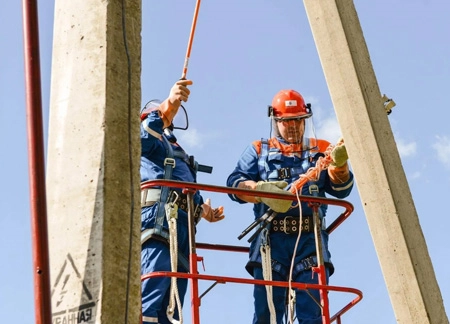
-
 Afrikaans
Afrikaans -
 Albanian
Albanian -
 Amharic
Amharic -
 Arabic
Arabic -
 Armenian
Armenian -
 Azerbaijani
Azerbaijani -
 Basque
Basque -
 Belarusian
Belarusian -
 Bengali
Bengali -
 Bosnian
Bosnian -
 Bulgarian
Bulgarian -
 Catalan
Catalan -
 Cebuano
Cebuano -
 Corsican
Corsican -
 Croatian
Croatian -
 Czech
Czech -
 Danish
Danish -
 Dutch
Dutch -
 English
English -
 Esperanto
Esperanto -
 Estonian
Estonian -
 Finnish
Finnish -
 French
French -
 Frisian
Frisian -
 Galician
Galician -
 Georgian
Georgian -
 German
German -
 Greek
Greek -
 Gujarati
Gujarati -
 Haitian Creole
Haitian Creole -
 hausa
hausa -
 hawaiian
hawaiian -
 Hebrew
Hebrew -
 Hindi
Hindi -
 Miao
Miao -
 Hungarian
Hungarian -
 Icelandic
Icelandic -
 igbo
igbo -
 Indonesian
Indonesian -
 irish
irish -
 Italian
Italian -
 Japanese
Japanese -
 Javanese
Javanese -
 Kannada
Kannada -
 kazakh
kazakh -
 Khmer
Khmer -
 Rwandese
Rwandese -
 Korean
Korean -
 Kurdish
Kurdish -
 Kyrgyz
Kyrgyz -
 Lao
Lao -
 Latin
Latin -
 Latvian
Latvian -
 Lithuanian
Lithuanian -
 Luxembourgish
Luxembourgish -
 Macedonian
Macedonian -
 Malgashi
Malgashi -
 Malay
Malay -
 Malayalam
Malayalam -
 Maltese
Maltese -
 Maori
Maori -
 Marathi
Marathi -
 Mongolian
Mongolian -
 Myanmar
Myanmar -
 Nepali
Nepali -
 Norwegian
Norwegian -
 Norwegian
Norwegian -
 Occitan
Occitan -
 Pashto
Pashto -
 Persian
Persian -
 Polish
Polish -
 Portuguese
Portuguese -
 Punjabi
Punjabi -
 Romanian
Romanian -
 Russian
Russian -
 Samoan
Samoan -
 Scottish Gaelic
Scottish Gaelic -
 Serbian
Serbian -
 Sesotho
Sesotho -
 Shona
Shona -
 Sindhi
Sindhi -
 Sinhala
Sinhala -
 Slovak
Slovak -
 Slovenian
Slovenian -
 Somali
Somali -
 Spanish
Spanish -
 Sundanese
Sundanese -
 Swahili
Swahili -
 Swedish
Swedish -
 Tagalog
Tagalog -
 Tajik
Tajik -
 Tamil
Tamil -
 Tatar
Tatar -
 Telugu
Telugu -
 Thai
Thai -
 Turkish
Turkish -
 Turkmen
Turkmen -
 Ukrainian
Ukrainian -
 Urdu
Urdu -
 Uighur
Uighur -
 Uzbek
Uzbek -
 Vietnamese
Vietnamese -
 Welsh
Welsh -
 Bantu
Bantu -
 Yiddish
Yiddish -
 Yoruba
Yoruba -
 Zulu
Zulu


វិច្ឆិកា . 19, 2024 08:06 Back to list
small cable roller
The Versatility and Importance of Small Cable Rollers
In the world of construction, manufacturing, and telecommunications, the efficient management of cables is paramount for ensuring safety, organization, and functionality. One of the unsung heroes in this arena is the small cable roller. Compact yet mighty, these simple devices offer a range of benefits that enhance workflow and minimize hazards across various industries.
What is a Small Cable Roller?
A small cable roller is a device designed to guide and support cables during installation or maintenance. Typically made from durable materials like aluminum or high-grade plastic, small cable rollers are engineered to withstand harsh environments while providing smooth movement and support for cables of various sizes. Their design often features wheels or rollers that facilitate the easy transfer of cable from one point to another, reducing friction and preventing damage to the cable.
Applications
The applications of small cable rollers are numerous. In the construction industry, they play a critical role in the installation of electrical wiring and telecommunications cables. By using small cable rollers, workers can ensure that cables are installed without kinks or twists, which can lead to unnecessary wear and tear or even complete cable failure.
In telecommunications, where data must be transferred reliably and efficiently, cable rollers help manage fiber optic and coaxial cables, ensuring that they remain intact and functional throughout their lifecycle. Moreover, small cable rollers are also invaluable in the entertainment industry, particularly during the setup of lighting and sound systems for concerts and events. They enable crew members to easily maneuver heavy-duty cables across stages without risking damage to the equipment or the infrastructure.
Benefits
small cable roller

The primary benefit of using small cable rollers is their ability to streamline the installation process. They significantly reduce the manpower required to lift and maneuver cables, allowing for faster project completion and more efficient allocation of labor resources. This efficiency not only saves time but also reduces costs associated with prolonged projects.
Furthermore, small cable rollers enhance safety on job sites. By keeping cables off the ground and properly aligned, they minimize tripping hazards and make it easier for workers to navigate around cable installations. This is particularly important in busy environments where a diverse range of activities is taking place simultaneously.
Additionally, using cable rollers helps prevent damage to expensive cables. When cables are dragged or pulled without proper support, they can suffer from abrasion, physical stress, or even failure. Small cable rollers ensure that cables are fed smoothly and correctly, reducing the risk of such issues and ultimately prolonging the life of the cable.
Selection and Considerations
When choosing a small cable roller, there are several factors to consider. First, it is crucial to select a roller that is appropriate for the type and size of cable being used. Different cables have different flexibilities and weights, so using a compatible roller is essential for optimal performance. Moreover, the roller should be built with high-quality materials to withstand the specific demands of the working environment.
The number of rollers needed will also depend on the scale of the project. For larger installations, multiple small cable rollers may be necessary to manage the layout effectively. Lastly, ease of use is another important consideration; a roller that is easy to set up and adjust will facilitate quicker work and improve overall efficiency.
Conclusion
In summary, small cable rollers are indispensable tools in various industries including construction, telecommunications, and entertainment. Their ability to streamline cable management and installation processes cannot be overstated. By enhancing efficiency, promoting safety, and protecting cable integrity, small cable rollers contribute significantly to the successful handling of cable systems. As industries continue to evolve and challenge existing norms, the importance of such innovative tools will remain pivotal in shaping the future of cable management.
Latest news
duct-rodders-and-conduit-rod-tools
NewsAug.22,2025
ratchet-pullers-and-wire-tightening-tools
NewsAug.22,2025
chain-ratchet-pullers-and-hoist-solutions
NewsAug.22,2025
telescopic-hot-stick-for-electrical-and-high-voltage-use
NewsAug.22,2025
cable-clamp-and-insulated-cable-clamp-systems
NewsAug.22,2025
duct-rodder-conduit-rodder-and-cable-solutions
NewsAug.22,2025








